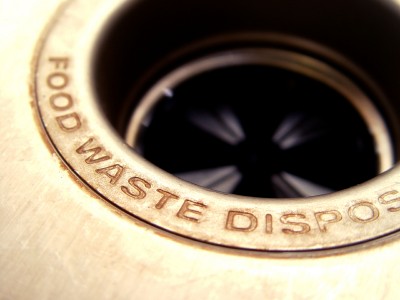Send your question to Umbra!
Q. Dear Umbra,
I’ve been trying to convince a friend to compost her food waste, now that she has a back yard. She claims that she plans to do so, but in the meantime, she’s sending all her food through the garbage disposal and says that it’s just as good, since all their water waste goes into their septic field behind the house. This makes sense to me, but I really don’t understand how all of this works and so I was wondering if she’s right?
Thanks,
Celia
Ann Arbor, Mich.
A. Dearest Celia,
 Grind house.Goodness is in the eye of the beholder. If you and your pal intend composting solely as a way to avoid landfilling organic materials, then yes, what she is doing is just as good. Of course, she is not ending up with compost to use on her yard, so in that way it’s not as good. The way it might actually be bad is how she is treating her septic tank. It’s a tank, not a bottomless pit. A clogged septic tank, or full leach field, is not a pretty sight — or smell. Let us peer in for a closer look at the septic tank and learn how she is flirting with disaster.
Grind house.Goodness is in the eye of the beholder. If you and your pal intend composting solely as a way to avoid landfilling organic materials, then yes, what she is doing is just as good. Of course, she is not ending up with compost to use on her yard, so in that way it’s not as good. The way it might actually be bad is how she is treating her septic tank. It’s a tank, not a bottomless pit. A clogged septic tank, or full leach field, is not a pretty sight — or smell. Let us peer in for a closer look at the septic tank and learn how she is flirting with disaster.
In homes with a septic tank, all the wastewater pipes from kitchen, bath, and laundry flow out of the house and to the tank. The tank is buried underground at a proper distance from the home, usually downhill. It holds 750-1,000 gallons of effluent. The effluent enters the tank and sits around. Solids sink to the bottom, fluids float above, with greasy residues providing a lovely icing atop it all. As new effluents enter the tank, a corresponding amount of liquid exits the tank and heads out to a leach field. The leach field is a network of holey pipes lying underground. The liquid leaches slowly out of the pipes and is filtered by the soil. Throughout the septic system are happy bacteria, who have found decomposition paradise.
Solids rejected by the bacteria — which might include hair, toilet paper, tampons, or indigestible food waste — stay in the tank and eventually fill it too high, causing system backups or overflow. Hence a tank must be pumped out periodically: every two to five years, depending on the size of the tank and the volume of sewage. Hopefully the pumping is done prophylactically and not in response to a stinky, wet emergency.
I don’t like garbage disposals, so I have an inherent bias. But by using her garbage disposal as a trash can, your friend introduces more solids and liquids than her septic tank was originally intended to handle. The best-case scenario is that she will simply need to pay for pump-out more frequently. The worst is that she is funneling grease and too much water and solids into her system, without stepping up her pump-out schedule, and either the leaching system will clog, an odiferous puddle will appear on her lawn, or she will have an in-house backup. These all sound much harder than throwing a pile of food waste into a passive compost pile.
Reasonably,
Umbra



